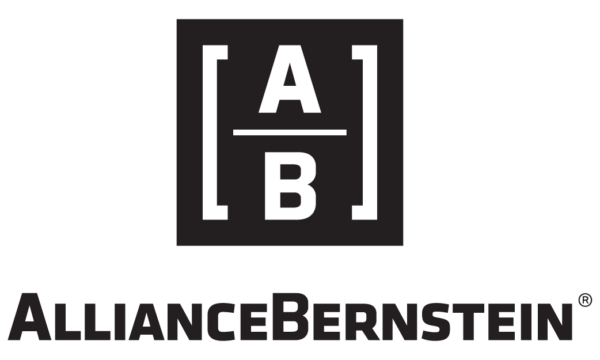Like watching paint dry, the construction lending application process moves ahead very slowly. By charting the flow of money on a construction project, one can see that there are inefficiencies and wasted time. These things prevent payments from getting to the correct vendor, which can unnecessarily delay a project from getting completed.
Even with project directors verifying that everything is in order on their end, they can still get hamstrung by the lending process. As fintech company Built Technologies (Built) proves with their platform, such wrinkles can get smoothed out for a timely completion of construction work.
Built is a construction finance tech company, and not a construction lending technology business. The vast majority of Built’s clients use the platform to service construction loans, but Built also helps with construction payments and spending, tracking how the big pot of money from a loan gets disbursed to vendors.
Built provides software for lending (from construction loan administration to risk analytics), services for lending (inspection services network), and software for construction personnel (related to payments, booking, and lien waivers). Hastening the disbursement of construction funds since 2014, Built has created partnerships with banks across the country, including BancorpSouth, First National Bank, and Veritex Community Bank. Built’s software is the only software endorsed by the American Bankers Association (ABA) for construction loan management, and holds the title of exclusive preferred partner with The Mortgage Collaborative.
Co-founder and CEO of Built Chase Gilbert explains the mission of the company, saying “We are very much trying to improve money flow from the lender to the owner of the project, from the owner to the contractors, and even the suppliers all the way downstream.”
Chase, along with co-founders Andrew Sohr and serial entrepreneur Scott Sohr, were all directly pained by the slow processes of getting a construction loan financed.
“Everyone involved had lived a different aspect of the problems that we are now solving,” Chase states.
He explains that construction “is a very collaborative industry,” and everything from doing the work on site to getting paid requires multiple parties to be able to work together. Built was a business born because of the frustrating ways money is distributed in construction, as obstructions can stymie progress on the project.
Chase says that Andrew Sohr was the impetus for Built. Andrew had multiple construction projects that he was involved with, and was dealing with multiple lenders for these projects. He was exasperated by every lender’s individual application process, with each loan application being different. Coming from a world where units and methods have to be standardized, Andrew saw the unique application processes for construction loans as unnecessary.
Time was also a factor in Andrew’s annoyance, as Chase explains that it’s a very slow procedure to apply for a construction loan. He says, “If you get a mortgage, you go through the whole rigmarole of getting the mortgage. But at least once you close the loan, it’s pretty simple. It’s your job to pay it back over a period of time… On a construction loan, it doesn’t work like that. You go through that whole process to get underwritten and approved. And then the joke of construction lending is, ‘The real work starts the day you close the loan.’ Because the lender doesn’t just fund the borrower… They hold the money back, and then they fund it as they build whatever it is they’re building.”
This piecemeal approach is used by lenders to ensure that money from a construction loan is used responsibly. The costs of building something are subject to fluctuation. Since the prices of materials or services can change so rapidly, the budget for a construction project has to be managed very carefully. Moving so slowly is not just frustrating, but problematic for construction project managers who need to pay subcontractors. Subcontractors doing construction work often prioritize projects based on how quickly they can get paid.
Chase and Andrew and Scott Sohr, one of Chase’s mentors due to his serial entrepreneurship, were discussing Andrew’s problems and a possibility of a solution.
Chase recalls, “So, Andrew kind of had this idea that there has to be a better way with technology. And then that’s when we really started picking that apart, like, well, ‘What is the better way? How does this work? Let’s go understand. Let’s go talk to the lender. Let’s talk to these inspectors. Let’s talk to everybody involved to figure out why it even works the way it works. And let’s obsess over thinking about, well, how could it work? How should it work? And let’s get them to tell us why it can’t work that way as opposed to being jaded by how it’s always been.’”
Chase frequently asks himself how the opportunity to start Built and make a dent in the construction loan space was even possible. He says that the technology necessary to create Built—mapping technology for construction sites, cloud computing, and smartphones—only existed a few years before the company was formed in 2014. According to Chase, construction is also a small portion of the lending activity that gets done, so the idea to cater to the needs of a comparatively small consumer base wouldn’t have occurred to many people.
The technology of Built makes the lives of bank lenders, project owners, contractors, subcontractors, inspectors, and many others better because it is not just using email or spreadsheets. All of the individuals working on a construction project use Built to simplify the exchange of information.
With a smoother workflow, the individuals can do more. For instance, financial institutions can manage portfolios three times the size of what they’re accustomed to with the same risk and compliance dollars using Built’s platform, thanks to a de-risked construction loan process.
The business was started in 2014, but saw a proper launch in May 2015, after the technology platform was built out and the necessary security audits for banks were satisfied. Built served its first three customers for all of 2015. In 2016, Built acquired 10 more banks as clients for the platform. The following years were marked by great growth. In 2017, the first institutional money was invested in Built, and in 2018, the client list had grown to include 40 banks who used Built for their construction loans.
Now, Built serves 150 banks and financial institutions in the U.S. and Canada, and serves the construction ecosystem for 550 clients. In total, Built processes $500M a year worth of construction dollars being processed by combined bank loans and payments sent out for construction jobs.
Built currently has about 230 employees total, with 100 onshore and 35 offshore employees in their tech workforce. The team brings many different solutions into one SaaS (Software-as-a-Service) platform that can be used to help build whatever the project requires. The features need to be adjustable based on the role of the user, and the scope of the features needs to zoom in or out based on the scope of the project. Just like having one Google login that does different things for one’s Gmail account, YouTube account, and Google Pay account, Built’s tech team answers the challenge of creating software that offers different, interconnected experiences that meet the needs of the user.
Their primary products in the “mothership” or construction loan administration (CLA) program are open source, and made with Python and different flavors of JavaScript, including TypeScript and Node.js. React is where the company’s software development is currently moving for front-end development. Some of the legacy services that Built has to maintain are done so in PHP.
For the immediate future, Built’s team will be working on very large internal initiatives, including breaking down legacy monoliths, continuing to build out the platform services and data lake, improving data analysis, and re-architecting the platform into a true SLA or service-oriented architecture. Built will continue to remain 100 percent cloud-based, and will continue to platform into SLAs with well-defined APIs. They’re also planning a huge effort to integrate Built with core providers and third-party vendors.
For further information about Built Technologies, be sure to visit their website and social media.









